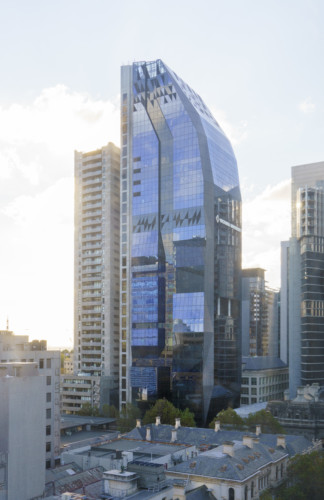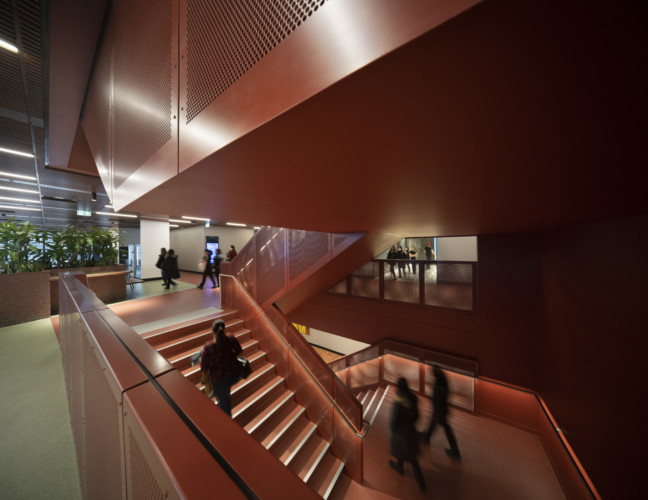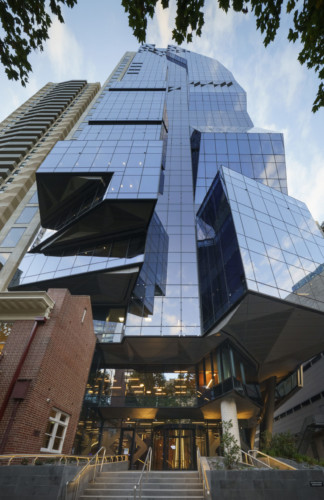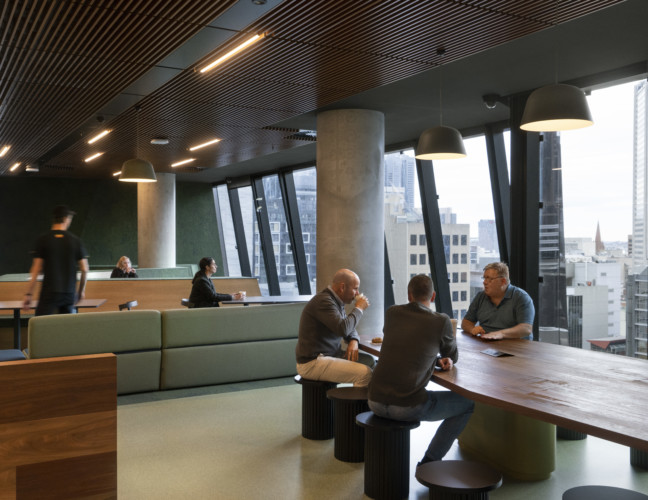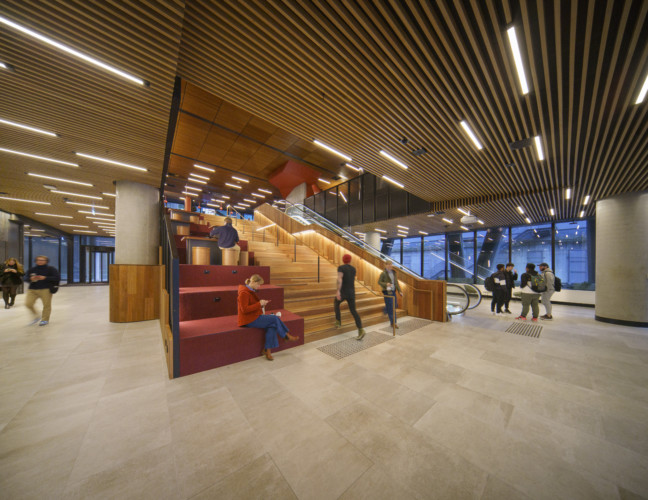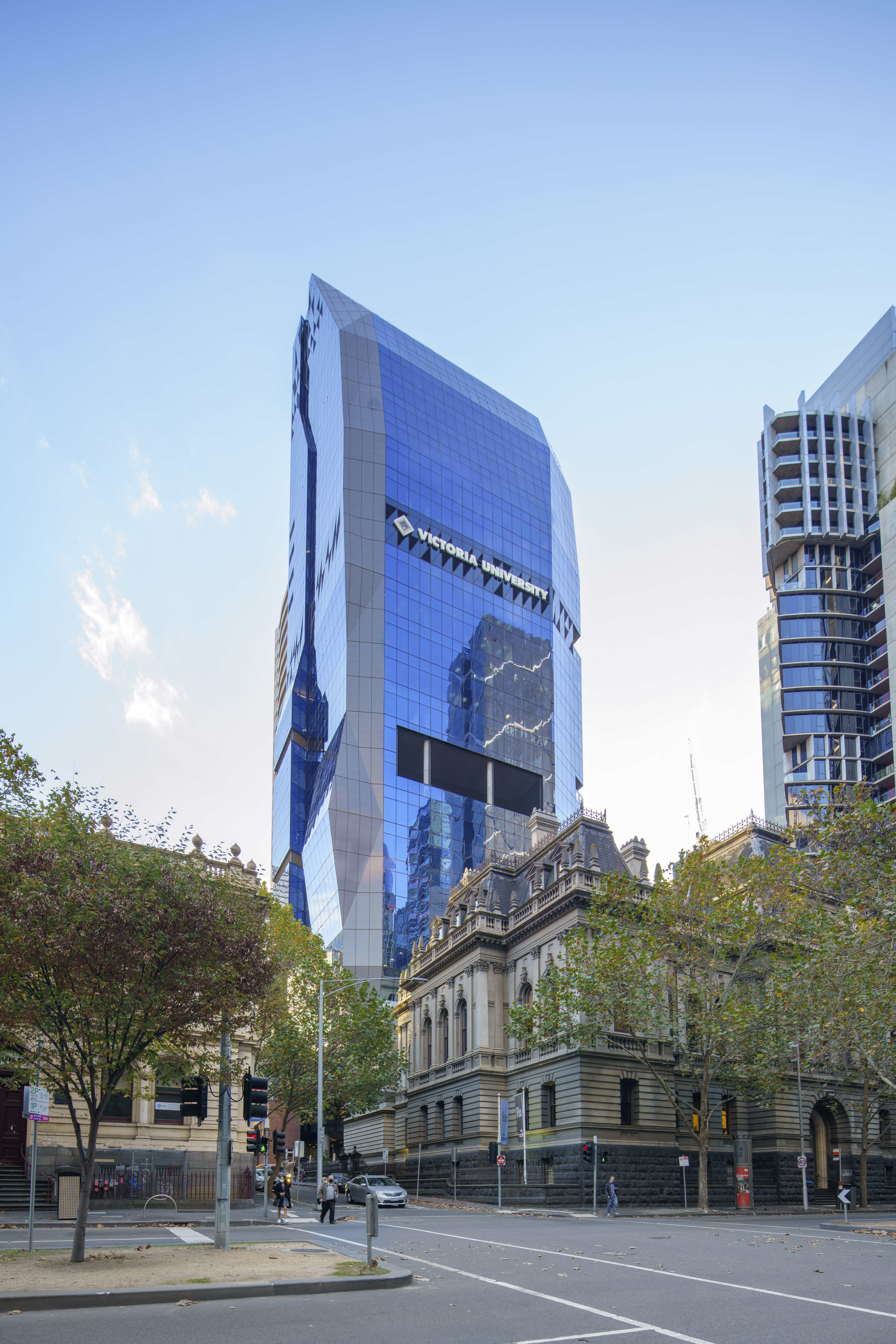
Victoria University City Tower
Client
ISPT
Location
Melbourne, Australia
Value
AUD $255M
Victoria University’s (VU) new 32-level City Tower, in the heart of Melbourne’s central business district (CBD), represents the university campus of the future. As Australia’s largest vertical campus, the new tower symbolises VU’s commitment to “providing high quality, accessible education and enriching the community”.
Through consolidation and expansion of VU’s city-based teaching and learning spaces, into one purposed built environment, the project creates diverse and engaging neighbourhoods for students and staff to collaborate and engage with one another. The new campus comprises a mix of formal and informal spaces for VU and VU Polytechnic, a workplace for various academic groups, public teaching clinics and a central library.
The design also consolidates two small sites determined to be of public health heritage value; the state’s Venereal Disease Clinic built in 1919 to combat an unwanted legacy of World War 1 and the Tuberculous Bureau built in 1927, which previously occupied the site divided by Sampson Lane.
The tower form is sympathetic to surrounding buildings and symbolises a unified integration of 19th century buildings and modern architecture. The slender, sculpted glass tower does not impose or overwhelm the existing heritage fabric and offers an elegant and timeless addition to the Melbourne CBD and the nearby legal precinct.
Where the tower meets the sky, the form is tapered and stepped, with the glass skin enclosing the upper-level plant room, to provide a unified cap to the building. This also allows for sunlight penetration and views to the sky, from the ground level.
The tower façade is articulated and folded to create a distinctive form, whereby mass and shape is ‘broken’ to distinguish upper and lower elements, creating an ‘off set’ layering expression to the east façade. The difference in materiality also contributes to a dynamic and unique façade, while thermal properties and double glazing minimise heat loss and heat gain.
At ground level, the building form is undercut to create a new city laneway which serves as a pedestrian pathway, connecting Queen Street and Little Lonsdale Street. Relocating the existing Sampson Lane to the eastern edge, allowed the building footprint to be maximised, to accommodate the tower. The new thoroughfare also provides a pedestrian connection to VU facilities housed in the state’s former Public Record Office and Land Titles Office fronting Queen Street, while the addition of a café in the laneway creates a lively and activated meeting space for students, staff and visitors to the building.
